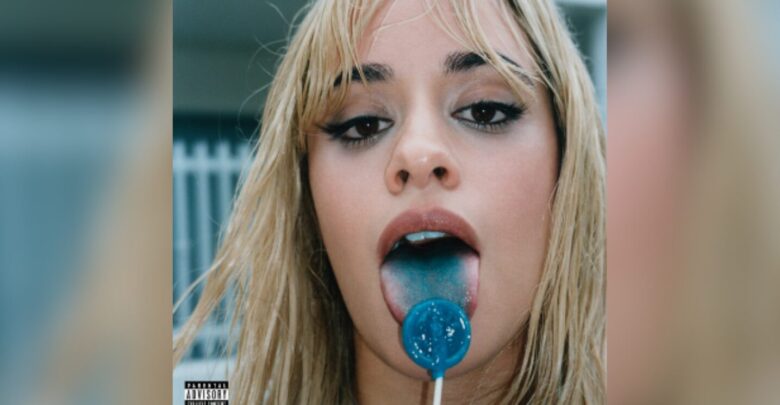Camila Cabello’s ‘C,XOXO’ is an attempt at experimenting
'C,XOXO' alternates between standout summer hits and confusing tracklist additions.
 Supplied
SuppliedCamila Cabello has returned to music with her fourth studio album, C,XOXO. The pop record is a love letter to Miami, where Cabello was raised for much of her childhood. Across its 14-song tracklist, the album features multiple collaborations and samples of iconic artists from Miami.
C,XOXO opens with “I LUV IT.” The verses have potential, and Cabello’s breathy vocals glide smoothly through the droning siren-like instrumentals. The chorus however, completely falls apart. Cabello’s grating, rapid repetition of the phrase “I love it” is very unpleasant to listen to. This song tries to glue together typical elements of hyperpop music, however, the execution is sloppy and underdeveloped. The result is a hollow, inauthentic attempt at breaking into the genre. The track has an odd transition from Cabello’s hyper-energized singing into Playboi Carti’s uninterested mumbling. His feature adds nothing of value to this track, mainly because it sounds like he recorded it half-asleep.
“pink xoxo,” however, is a refreshing track, as Cabello’s voice sits perfectly over the sparkling synths. The eerie, distorted outro is something out of a Silent Hill soundtrack. Sonically, “pink xoxo” adds so much depth to the album. What frustrates me is that this song has so much potential, but Cabello limits it to a 55 second interlude. It features a PinkPantheress collaboration that goes completely unnoticed on the first listen. It wasn’t until I searched up the writing credits that I realized she was on the song. Just from her brief presence on the track, I found myself enjoying how their vocals blend together. A full length collaboration with PinkPantheress would be really interesting to hear.
“Twentysomethings” borrows from SZA’s cursive singing style a little too brazenly — the ad libs in the final chorus sound indistinguishable from her. The intentions of this song are lost on me. The reflective and confessional theme is without a doubt influenced by SZA’s 2017 track “20 Something.” Both songs discuss the confusion and heartbreak experienced by the singers during their twenties. However, the choice of also imitating SZA’s vocal style leaves me confused. Is this an attempt at an inspired interpolation or a blatant rip off?
Although it’s not the greatest timing to have two Drake features on your album following the back-and-forth diss-track releases between him and Kendrick Lamar, Drake definitely carries “HOT UPTOWN.” This song fully embodies summer of 2016 Views-era Drake. Between the dancehall elements, Drake’s melodic rapping, and his controversial use of a Jamaican accent, “HOT UPTOWN” is a Drake song through and through. This song is not bad by any means. We know this because we’ve seen variations of this song succeed a dozen times over by Drake himself. This begs the question — why is it on Cabello’s album?
While “HOT UPTOWN” is a collaboration with Drake, his second feature on the album, “Uuugly,” is entirely a solo Drake interlude. Cabello has no credits on this track. C,XOXO struggles from a lack of cohesiveness, and this song is another confusing addition to the tracklist. I enjoy the synth-heavy production on this track, but Drake’s auto-tuned vocal runs sound whiny and tired.
“DREAM-GIRLS” is a fun, energetic track that revives the record. The track very skillfully samples vocals and interpolates lyrics from “Shawty is a 10” by The-Dream. Cabello’s approach to this song is fresh and well-executed, her perky vocal performance and the sped-up instrumentals bring new life to this track. The dejected piano ballad “B.O.A.T.” features an unexpected, but clever sample of Pitbull’s “Hotel Room Service.” This song allows Cabello’s impassioned and heartfelt vocals to take the spotlight. “DREAM-GIRLS” and “B.O.A.T” work so well because Cabello not only showcases her influences, but also uplifts them by playing into her unique musical strengths and making these songs distinctly her own.
Cabello excels at capturing the essence of Miami on tracks like “Dade County Dreaming” and “DREAM-GIRLS.” However, there are some confusing additions to the tracklist that muddle the focus of the album. Cabello markets this album as risky and experimental, yet she tends to play it safe with unoriginal concepts. Regardless, I can acknowledge the value of this album as a transition point in the context of Cabello’s discography. I am excited to see her lean further into experimental sounds and concepts in the future.




